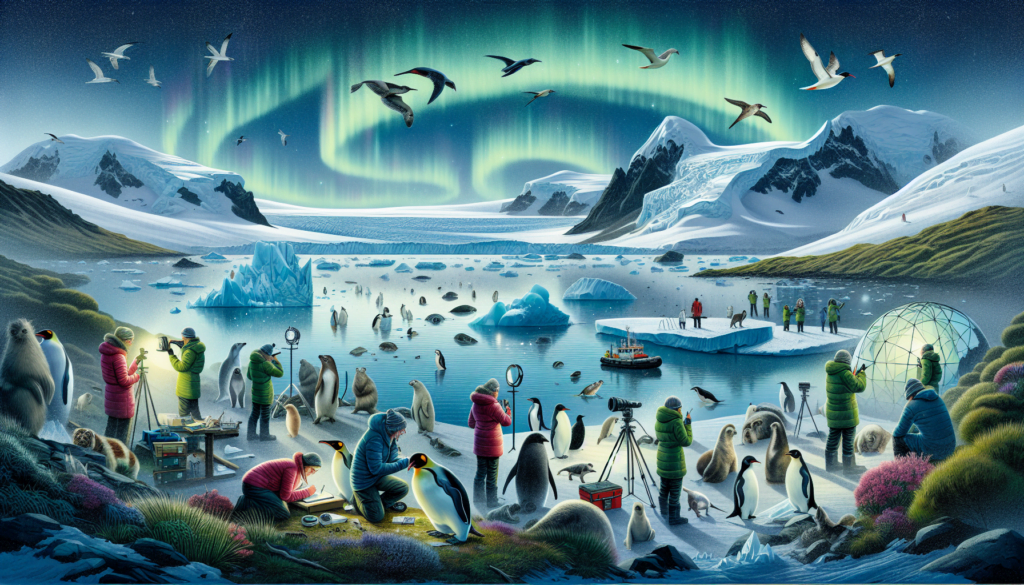Contents
The pristine wilderness of Antarctica is one of the last frontiers on Earth, where life has adapted to some of the planet’s harshest conditions. However, this frozen continent, with its intricate ecosystems and unique species, is under threat. Climate change, human activity, and invasive species pose significant risks to Antarctica’s biodiversity. The race is on to save this precious natural heritage before it’s too late.
The Unique Biodiversity of Antarctica
Antarctica’s biodiversity is incredibly unique due to its isolation and extreme environmental conditions. Despite harsh climates, the continent is home to a variety of species that have adapted to survive in such an inhospitable environment. From microscopic bacteria thriving in subglacial lakes to seabirds like the Emperor penguin and marine mammals like the Weddell seal, Antarctica’s ecosystems are a testament to life’s ingenuity.
Marine Biodiversity
The Southern Ocean, which encircles Antarctica, is rich with life. Krill, a keystone species, forms the basis of the Antarctic food web. Penguins, whales, seals, and seabirds all rely heavily on krill as a primary food source. The health of these marine species is intricately linked to the availability of krill, which itself is susceptible to changes in sea ice and ocean temperatures.
Terrestrial Biodiversity
On land, the life forms are mostly microscopic, including algae, fungi, and tardigrades (water bears). These organisms have adapted to survive extreme cold and limited nutrient availability. Some unique forms of vegetation include mosses and lichens that grow on ice-free land areas known as nunataks. In these harsh terrains, even the smallest changes in temperature and moisture can have significant impacts on the survival of these species.
Threats to Antarctic Biodiversity
The threats facing Antarctica are as vast and complex as the continent itself. The primary concerns include climate change, human disturbance, pollution, and invasive species.
Climate Change
Climate change is the most pressing threat to Antarctic ecosystems. Warming temperatures are causing the ice sheets to melt at an alarming rate, resulting in habitat loss for species dependent on ice, such as seals, penguins, and krill. The changes in sea ice conditions also affect the reproductive cycles of marine species, disrupting the entire food web.
Human Activity
Despite its remoteness, human activities have left an indelible mark on Antarctica. Scientific research stations, tourism, and fishing industries bring with them pollution, waste, and disturbances that can have detrimental effects on wildlife. In particular, the fishing of krill poses a direct threat to marine ecosystems, potentially impacting the entire Antarctic food web.
Invasive Species
Invasive species are another significant threat. Human activity can inadvertently introduce non-native species to the continent. These species can outcompete or prey upon native organisms, disrupting the delicate balance of Antarctic ecosystems. For example, the introduction of non-native grasses and microbes can have unforeseen consequences on local biodiversity.
Conservation Efforts
Several international treaties and conservation initiatives are in place to protect Antarctica’s unique biodiversity. The main framework is the Antarctic Treaty System, which includes various measures such as the Protocol on Environmental Protection to the Antarctic Treaty (also known as the Madrid Protocol).
The Antarctic Treaty System
The Antarctic Treaty, signed in 1959, is the cornerstone of governance in Antarctica. It prohibits military activity, mineral mining, and promotes scientific research while protecting the continent’s ecosystem. The Madrid Protocol, adopted in 1991, further enhances protection by designating Antarctica as a "natural reserve, devoted to peace and science."
Marine Protected Areas
Marine Protected Areas (MPAs) are key to conserving Antarctica’s marine biodiversity. The Ross Sea MPA, established in 2016, is one of the largest in the world, providing a sanctuary for myriad marine species. Continued efforts are being made to establish more MPAs around Antarctica to safeguard critical habitats and alleviate pressures from fishing and human interference.
Scientific Research and Monitoring
Ongoing scientific research is crucial for understanding the impacts of climate change and human activities on Antarctic ecosystems. Researchers are monitoring changes in ice cover, species populations, and ecosystem health to inform conservation strategies. Collaborative international research initiatives, such as SCAR (Scientific Committee on Antarctic Research), play a pivotal role in coordinating these efforts.
Conclusion
Antarctica’s biodiversity, though resilient, is at a tipping point. The concerted efforts of international communities, scientists, and conservationists are essential to safeguarding this unique and fragile ecosystem. By continuing to implement stringent protection measures and conducting robust scientific research, there is hope that the race to save Antarctica’s biodiversity can be won. Every action taken towards conservation today will help ensure that future generations can marvel at the untouched beauty and rich biodiversity of this last great wilderness.

